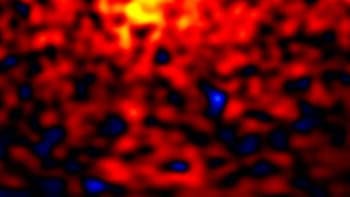Astronomers have seen dark matter directly for the first time. Ben Oppenheimer of the University of California at Berkeley and colleagues in the US and UK have discovered a new kind of white dwarf that could account for up to a third of the 'dark' matter in the Universe. The extremely dim burnt-out stars were found in the 'galactic halo' that surrounds the Milky Way. Oppenheimer's team believes they represent part of the invisible matter - proposed to exist 70 years ago - that binds together galaxies and galaxy clusters with its gravitational pull (B R Oppenheimer et al 2001 Science at press).

Oppenheimer and co-workers suspected that some very faint objects in existing photographs could be white dwarfs – Earth-sized remnants of ancient stars. The team collected spectra of the mysterious bodies at the Cerro Tololo Interamerican Observatory in Chile and found that over half of them were a new breed of ultracool white dwarf. “We’ve found a previously undetected population of stars in the galactic halo that represents a fraction of the dark matter in the galaxy”, says Oppenheimer.
It is thought that ‘cold’ white dwarfs – so-called because their surface temperatures are below 4500 kelvin – are very faint because of the way hydrogen molecules behave in their atmospheres. Astronomers believe the molecules collide and take on temporary molecular moments, which makes them absorb light at most visible wavelengths.
An earlier investigation hinted at the existence of a population of dim stars when it found that light from distant bright stars was bent by invisible objects closer to the Milky Way – a phenomenon known as microlensing (see Controversy reigns over ‘dark matter’ claim). “These indirect observations indicated that white dwarfs may make up a substantial fraction of dark matter”, explains Oppenheimer, “but the results were interpreted differently by some astronomers”.
Theories of star formation and the history of the galaxy will also benefit from the new discovery. “These cool white dwarfs are fossils of the early population of halo stars”, says team member Didier Saumon. “This discovery will branch out into many different areas of astrophysics”.



